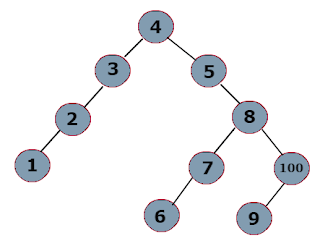
Counting nodes in a tree? Yes how to get Binary Tree size
Counting nodes in a tree? Yes how to get Binary Tree size nothing but counting all the nodes in a Binary Tree. For example the size of the below binary tree is 11
Lets see simple Java code to create Binary Tree and to find the size of the tree as well.
OUTPUT:
Lets see simple Java code to create Binary Tree and to find the size of the tree as well.
class Node { Node left, right; int data; public Node(int data) { this.data = data; } } public class BinaryTreeSize { public static void main(String[] args) { int a[] = { 11, 6, 19, 4, 8, 17, 43, 5, 10, 31, 49 }; Node root = null; BinaryTreeSize tree = new BinaryTreeSize(); for (int i = 0; i < a.length; i++) { root = tree.insertNode(root, a[i]); } int count = tree.binaryTreeSize(root); System.out.println("Binary Tree size : " + count); } public int binaryTreeSize(Node root) { return nodeCount(root, 0); } /* * Getting binary tree size using recursive algorithm */ public int nodeCount(Node root, int val) { if (root != null) { val++; val = nodeCount(root.left, val); val = nodeCount(root.right, val); } return val; } public Node insertNode(Node root, int data) { Node currentNode = new Node(data); if (root == null) { root = currentNode; } else { insertData(currentNode, root); } return root; } public Node insertData(Node newNode, Node root) { if (root.data < newNode.data) { if (root.right == null) { root.right = newNode; } else { return insertData(newNode, root.right); } } else if (root.data > newNode.data) { if (root.left == null) { root.left = newNode; } else { return insertData(newNode, root.left); } } return root; } }
OUTPUT:
Binary Tree size : 11





